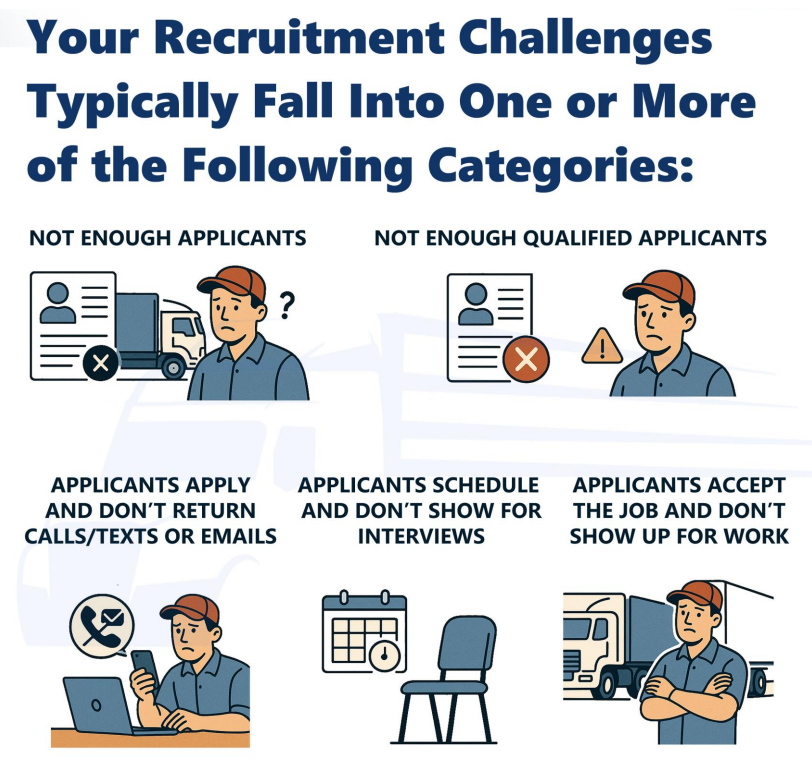Most of your recruitment efforts typically fall into one or more of the following categories. Recognizing where you are spending your time helps you see what is working, what is not, and where small adjustments can create big improvements.
1. Not Enough Applicants
You are posting jobs, but not enough people are applying. This usually means your reach is too narrow. Posting in the same places again and again limits visibility. Expanding into new channels such as targeted campaigns, referral programs, or niche platforms can quickly widen your applicant pool.
2. Not Enough Qualified Applicants
You may be getting resumes, but they do not meet your standards. This often comes from broad job ads or posting in the wrong places. Focusing your ads where the right talent actually looks, and clarifying requirements in your postings, helps filter out unqualified candidates and attract stronger ones.
3. Applicants Apply but Do Not Respond
A candidate applies, you follow up, and then silence. This is one of the most common frustrations. The reality is that candidates are applying to multiple jobs and often respond to whoever reaches them first. Quick follow ups and clear communication can turn these silent applicants into real conversations.
4. Applicants Schedule but Do Not Show for Interviews
You have interviews on the calendar, but the candidate never arrives. Many candidates double book or choose the opportunity that feels most convenient. Reducing no shows requires reminders, easy scheduling, and making your opportunity stand out as worth their time.
5. Applicants Accept but Do Not Show Up to Work
This is the most costly category. After an offer is accepted, the candidate never starts. In most cases, they have taken another job or had second thoughts. The best way to prevent this is by staying engaged between offer and start date, keeping communication open, and reinforcing the value of joining your team.
Final Takeaway
If you have been struggling with hiring, chances are your challenges fit into one or several of these categories. The good news is that each one has a solution. By identifying where your efforts are falling short, you can focus on the fixes that will deliver stronger results and a more reliable workforce.

